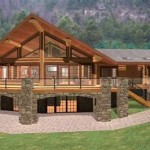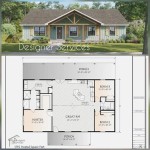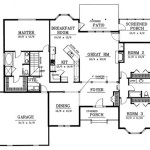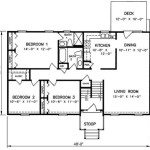Shed to Home Floor Plans: Transforming Storage into Habitable Space
The concept of converting a shed into a habitable dwelling has gained considerable traction in recent years, driven by factors such as the rising cost of housing, the desire for smaller and more sustainable living spaces, and the increasing availability of pre-fabricated shed structures. Converting a shed into a functional home requires careful planning and execution, with the floor plan serving as the foundation for the entire project. A well-designed floor plan not only maximizes the use of available space but also ensures compliance with local building codes and regulations, while creating a comfortable and livable environment.
The process of developing shed to home floor plans involves several critical considerations. These include evaluating the existing shed structure, determining the desired functions and features of the converted space, understanding the specific building codes applicable to residential conversions, and selecting appropriate materials and construction techniques. Success hinges on a comprehensive understanding of spatial design principles, structural integrity, and the specific needs of the future occupants.
Evaluating the Existing Shed Structure
Before embarking on the design phase, a thorough assessment of the existing shed structure is paramount. This evaluation should focus on several key aspects, including the shed's size, construction materials, foundation type, and overall structural integrity. The dimensions of the shed will directly influence the available square footage and, consequently, the feasibility of incorporating desired features like bedrooms, bathrooms, and living areas. The materials used in the shed's construction, such as wood, metal, or concrete, will affect the conversion process and the types of modifications that can be safely implemented.
The foundation is a crucial element to inspect. A solid and level foundation is essential for ensuring the stability and longevity of the converted structure. If the existing foundation is inadequate, reinforcement or replacement may be necessary, adding to the overall cost and complexity of the project. Furthermore, the structural integrity of the shed's walls and roof must be assessed to determine their ability to withstand the loads associated with residential use, including wind, snow, and seismic forces, depending on the geographic location.
Existing sheds are often designed for storage and not habitation. This means that considerations for insulation, ventilation, and moisture control are often absent. Addressing these shortcomings is vital to creating a comfortable and healthy living environment. The evaluation should also consider existing utilities, such as electricity and plumbing. If these are not already present, the cost and feasibility of installing them must be factored into the planning process.
Designing the Interior Space and Functionality
The design of the interior space is where the shed truly transforms into a home. This stage involves determining the desired functions and features of the converted space. Key considerations include the number of bedrooms and bathrooms, the layout of the living area, the size and configuration of the kitchen, and the inclusion of any additional features, such as a home office, laundry room, or storage space. The floor plan should be designed to maximize the use of available space while ensuring a comfortable and functional layout.
The principles of space planning are crucial at this stage. Efficient use of space can be achieved through strategies such as open-concept layouts, multi-functional furniture, and vertical storage solutions. The placement of windows and doors should be carefully considered to maximize natural light and ventilation. In smaller sheds, careful attention must be paid to minimizing wasted space and creating a sense of openness. This might involve incorporating built-in storage solutions, using light colors to visually expand the space, and strategically placing mirrors to reflect light.
The integration of essential utilities is also a critical aspect of the interior design. The floor plan should accommodate the placement of plumbing fixtures, electrical outlets, and HVAC systems. Consideration should be given to the routing of pipes and wires to minimize disruption to the living space and ensure easy access for maintenance and repairs. The layout should also comply with accessibility requirements, particularly if the converted shed is intended for use by individuals with disabilities or mobility limitations. This may involve incorporating wider doorways, ramps, and accessible bathrooms.
Navigating Building Codes and Regulations
Converting a shed into a home requires strict adherence to local building codes and regulations. These codes are designed to ensure the safety, health, and welfare of the occupants and the surrounding community. Failure to comply with these regulations can result in costly delays, fines, and even the forced demolition of the converted structure. Therefore, it is essential to thoroughly research and understand the specific building codes applicable to residential conversions in the relevant jurisdiction.
Building codes often address a wide range of issues, including structural integrity, fire safety, electrical wiring, plumbing, ventilation, insulation, and accessibility. The requirements for each of these areas can vary depending on the location and the specific type of conversion. For example, codes may specify minimum ceiling heights, window sizes, and egress requirements for bedrooms. They may also mandate the installation of smoke detectors, carbon monoxide detectors, and fire-resistant materials.
Obtaining the necessary permits is an essential step in the conversion process. These permits ensure that the proposed work meets the requirements of the building codes and that inspections are conducted at various stages of construction. The permit application typically requires detailed floor plans, structural drawings, and specifications for materials and equipment. It is often advisable to consult with a qualified architect or engineer to ensure that the plans comply with all applicable codes and regulations. Engaging with local building officials early in the process can help to identify potential issues and streamline the permitting process. Additionally, zoning regulations must be considered to ensure that residential use is permitted on the specific property.
Choosing appropriate materials is also critical in meeting building code requirements and ensuring the longevity of the conversion. Materials must be selected for their durability, resistance to fire, moisture, and pests, and their compliance with relevant health and safety standards. For example, insulation materials must meet minimum R-value requirements to ensure energy efficiency, and electrical wiring must be installed in accordance with the National Electrical Code (NEC).
The transformation of a shed into a home presents a unique opportunity to create a personalized and cost-effective living space. However, it is a complex undertaking that requires careful planning, attention to detail, and a thorough understanding of building codes and regulations. By carefully evaluating the existing structure, designing a functional and efficient floor plan, and navigating the permitting process effectively, it is possible to successfully convert a simple shed into a comfortable and habitable dwelling. Furthermore, sourcing contractors with experience in shed conversions can provide invaluable expertise and guidance throughout the project. The final outcome should not only meet the immediate needs of the occupants but also provide a sustainable and enjoyable living environment for years to come.
The long-term maintenance of the converted shed should also be factored into the initial planning stages. This includes ensuring easy access to utilities for repairs and upgrades, selecting durable and low-maintenance exterior materials, and implementing strategies to prevent moisture damage and pest infestations. Regular inspections and maintenance activities can help to identify and address potential problems before they escalate, preserving the value and integrity of the converted shed over time.

Shed To Home 16x40 Floor Plan Tiny House Plans

Pin On Planos De Casas Pequeñas

Recreational Cabins Cabin Floor Plans

Pin By Kris Verrier On Tiny House Plans Shed To Lofted Barn Cabin Floor

14x40 Deluxe Lofted Barn Cabin In 2024 Floor Plans Shed House

Recreational Cabins Cabin Floor Plans

The Manhattan I Farmhouse Floor Plans Barn Homes Barndominium

16 X50 Shed To House Floor Plans Tiny 2 Bedrooms Bathrooms

Modern And Cool Shed Roof House Plans Houseplans Blog Com

Modern And Cool Shed Roof House Plans Houseplans Blog Com








